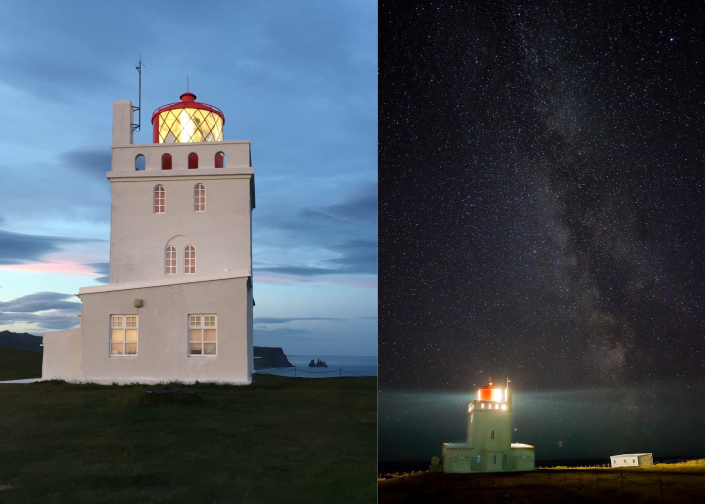Vinna við nýjar heimasíður Umhverfis- og orkustofnunar og Náttúruverndarstofnunar er í gangi. Heimasíða Umhverfisstofnunar er virk á meðan vinnunni stendur. Information in English
Culture and history

The history and restoration of the Dyrhólaey lighthouse is in many ways remarkable and was pioneering work for lighthouses in Iceland. In 1910, a Swedish iron-frame lighthouse was erected in Dyrhólaey, the first of its kind to be built in Iceland. A little later, in 1927, the lighthouse was built as the concrete structure we see before us now. Guðjón Samúelsson, State Master Builder, did the original design, but Benedikt Jónasson and Thorvald Krabbe also had a hand in designing the lighthouse. The lighthouse is the first landfall lighthouse and also the brightest; the highest point of the lantern is 123 above sea level, and its light can be seen at a distance of 27 miles (43 km). A radio beacon was also located in the lighthouse after 1928 but was removed after WWII. The radio beacon emitted radio waves that airplanes used to position themselves.

A lighthouse keeper managed the lighthouse until 2015. Since then, it’s been managed by the Icelandic Roads Administration. In previous years, the lighthouse keeper often lived in the lighthouse and the land ranger house was used as a small sheepcote. Later, the land ranger house was turned into a lavatory, but today, it is the land rangers’ facilities. The lighthouse was converted to electricity in 1964, simplifying the lighthouse keeper’s job significantly. The lighthouse is well maintained and kept in good condition, as it is still in full operation. Its exterior was repaired and painted in June 2020.
Harbour Construction

For a while, there were grand plans on harbour construction in Dyrhólaey. Several newspaper articles were printed on the matter in the years 1960–1980. These ideas petered out once the cost of the planned harbour became clear. The only way to justify such cost for harbour construction was to build an aluminium smelter, but the residents of Mýrdalshreppur objected. However, funding was obtained for activities in the area, and in 1977, drums and moorings were erected and a restriction blasted into the rock at Kirkjufjara, which was named Glópagjá (fools canyon). Traces of these grand ideas can be seen in Lágey.
Bolabás

Bolabás is the unique rock formation in the sea cliffs on the eastern part of Dyrhólaey. This interesting geological formation can be very beautiful on a nice summer day but quickly transforms in a storm. According to folklore, a certain creature lives in Bolabás. The creature was known as Eiðsboli and was said to howl intensely if a storm was coming. It is possible to listen for the deep, rhythmic waves by Bolabás that might indicate a storm is coming.